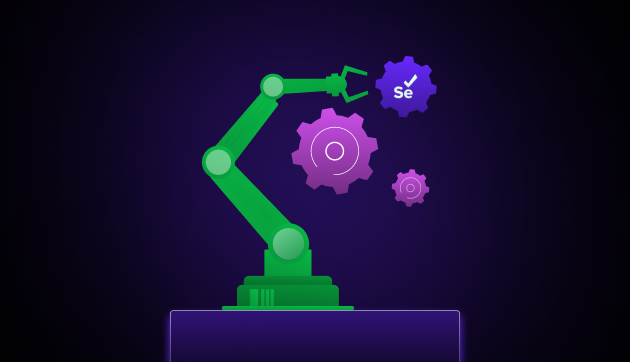![Manual Testing Vs Automation Testing! [DETAILED] 1 Post thumbnail](https://www.guvi.in/blog/wp-content/uploads/2022/03/4.-Testing-1.png)
Manual Testing Vs Automation Testing! [DETAILED]
Oct 24, 2024 3 Min Read 2860 Views
(Last Updated)
Both manual testing and automation testing are software testing methods. We all know the importance of software testing in any product or application life-cycle. However, understanding which software testing method to implement- Manual Testing vs Automation testing for a particular test is crucial.
Let’s begin with Manual Testing, the traditionally followed methodology.
Table of contents
- Manual Testing
- So, When to use Manual Testing?
- Then, what are the advantages & disadvantages of Manual Testing?
- Now, What is Automation Testing?
- So, when should you be Automating your software Tests?
- Test Automation Advantages and Disadvantages
- When to use Manual Testing over Automation Testing?
- Automation Testing Vs. Manual Testing:
- Wrapping Up
Manual Testing
Manual testing is the most fundamental testing process. And, here the tester executes the test cases manually without the use of any automated tools.
A manual tester has to consider the end-user perspective and manually test all the use-cases. This process is inevitable and crucial as it ensures whether the application is performing according to the user’s requirement or not. So, it incorporates a great deal of planning and time. Even the test cases are also manually generated.
So, When to use Manual Testing?
It is best to use Manual Testing for the below tests.
Exploratory Testing: Domain experts who perform software testing just by exploring the functionalities of the product application use Exploratory testing. The manual testing professionals usually carry out the processes without having accurate knowledge of the requirements!
Usability Testing: It is the basic user-specific requirement testing. Testers perform this to verify whether the application is user-friendly or not! It underlines whether the application would be comfortable for use by the end-user or not. It basically tests user-friendliness and ease of usability.
Ad-hoc Testing: Unlike usability testing, Ad-hoc testing is informal testing. So, in recurrently occurring use cases, wherein the knowledge of the tester is excellent in terms of the use cases, the tester usually performs Ad-hoc testing. In Adhoc testing, testers randomly test the application without following any documents and test design techniques.
Then, what are the advantages & disadvantages of Manual Testing?
Advantages of Manual Testing:
- Manual Testing can be in use for every kind of application. However, it is best for short life cycle products.
- Is it advisable to execute the newly designed test cases manually & then only automated, if required?
- The projects that see frequent revisions in requirements & GUI should undergo tests manually.
- The initial investment time and money involved in Manual Testing appear to be lesser when compared to Automation testing.
- Adhoc testing is supported by manual testing.
- Knowledge of Automation Tools & their implementation is not mandatory.
Disadvantages of Manual Testing:
- When regression testing comes into the picture, Manual Testing appears to be time-consuming.
- As the processes cannot be recorded, reusability is out of the question.
- Manual testing is less reliable compared to automation testing. As humans perform it, the probability of errors and mistakes is more.
- In the long run, manual testing is more expensive than automation testing.
That said, there are certain cases when we need to stick to manual testing only. Let’s have a look at them.
By now, we have a good first-hand view of manual testing. So, further, let’s quickly leap onto Automation testing!
Now, What is Automation Testing?
Leveraging automation tools in the process of testing data, executing data & tests, and analyzing tests to improve software quality is Automation Testing. It is also called test automation or automated QA testing.
Where tedious repetitive test case implementations come into the picture, Automation testing relieves much of the manual requirements of the testing lifecycle.
Read more about Automation Testing here.
So, when should you be Automating your software Tests?
We do Automation testing in the following areas:
Regression Testing
Software testing where you are pretty sure that the new changes made in the codebase do not in any way impact the existing software functionality is called Regression Testing. So, these are the more redundant or repeated piece of activity.
![Manual Testing Vs Automation Testing! [DETAILED] 2 Regression testing](https://i.pinimg.com/originals/48/66/d2/4866d21454e5f7b905653ad805b3c1e9.jpg)
So, automating it is the best practical solution. Because when the frequency of such code changes increases humans tend to feel it boring and start making errors that can affect the user experience.
Load Testing
As the name suggests, load testing is to test whether the system/application can handle the required or expected number of processes. It puts the application in multiple test cases to check the behaviour under both normal and peak load conditions.
So, in the case of load testing too, Automated testing is an apt testing option.
![Manual Testing Vs Automation Testing! [DETAILED] 3 Pin on Software Testing](https://i.pinimg.com/originals/c8/9b/cf/c89bcf5b23b40cdd77cc8b1026cacbc3.jpg)
Performance Testing
Again, performance testing means a straightforward test of the performance of the application like the speed, scalability, stability, and characteristics of the project or application. Performance is concerned with achieving response times, throughput, and resource utilization levels. Also, determining this is best done with Automation Testing.
Test Automation Advantages and Disadvantages
Advantages of Automation testing
- It is faster and cheaper in the long run
- Automation testing is more reliable, powerful, & versatile.
- It is reusable because the automation process can be recorded
- Moreover, they run without much human intervention
- Disadvantages of Automated Testing:
- Automation Testing is expensive and is recommended only for stable products
- Most importantly, it endures huge maintenance
Master Selenium Automation Testing Course
When to use Manual Testing over Automation Testing?
- Always, at the initial development stage, choose manual testing only.
- For Adhoc & exploratory testings
- Where GUI comes into the picture
- For really short-term projects
- When the test cases cannot be automated. Like, say, captcha.
Well, whenever a comparison or vs. comes into the picture a table is a must. Bidding the same thought, here is the Automation Testing vs. Manual Testing.
Automation Testing Vs. Manual Testing:
| Parameters | Automation testing | Manual testing |
|---|---|---|
| What is it? | Leveraging automation tools in the process of testing data, executing data & tests, and analyzing tests to improve software quality is Automation Testing. It is also called test automation or automated QA testing. | In, Manual testing, the test cases are executed manually without the use of any automated tools. A manual tester has to consider the end-user perspective and manually test all the use-cases. This process is inevitable and crucial as it ensures whether the application is performing according to the user’s requirement or not. It incorporates a great deal of planning and time. Even the test cases are generated manually. |
| Reliability | Automation Testing is more reliable as it tests the application with the help of tools and test scripts. | Manual Testing is not very reliable as there is a possibility of human error. |
| Reusability | The test script can be reused across multiple releases. | Manual Testing does not have any scope of recording and it is usually applicable in small processes, so reusability doesn’t come into the picture. |
| Time-saving | Automation Testing is always faster than manual testing. | Manual Testing is time-consuming due to the usage of human resources. |
| Cost-effectiveness | While using Automation Testing, the initial investment cost is high. But in the long run, it is cheaper than Manual Testing | While using Manual Testing, the initial investment cost is comparatively low. But in the long run, it is more costly than Automation Testing. Human Resources need investment. |
| Maintenance | It incorporates low maintenance | Manual Testing endures high maintenance. |
| Programming knowledge | Without having good programming language skills, testers cannot write the test script. | There is not much need to know a programming language, Only know-how of the product knowledge is enough. |
![Manual Testing Vs Automation Testing! [DETAILED] 4 Manual Testing Vs. Automated Testing Vs. Integrated Approach](https://www.scnsoft.com/blog-pictures/test-automation/manual+automated-testing+integrated-approach_01-cover.png)
Wrapping Up
Though automation testing is better than manual testing in multiple ways, most organizations are going automated.
Are you looking out for a good automation testing course? Then you must check here!
GUVI’s Automation Testing Career Program is not only the best in the market but it also offers placement assistance. Isn’t that intriguing?
Please comment and share below. Let us hear what you think!















Did you enjoy this article?